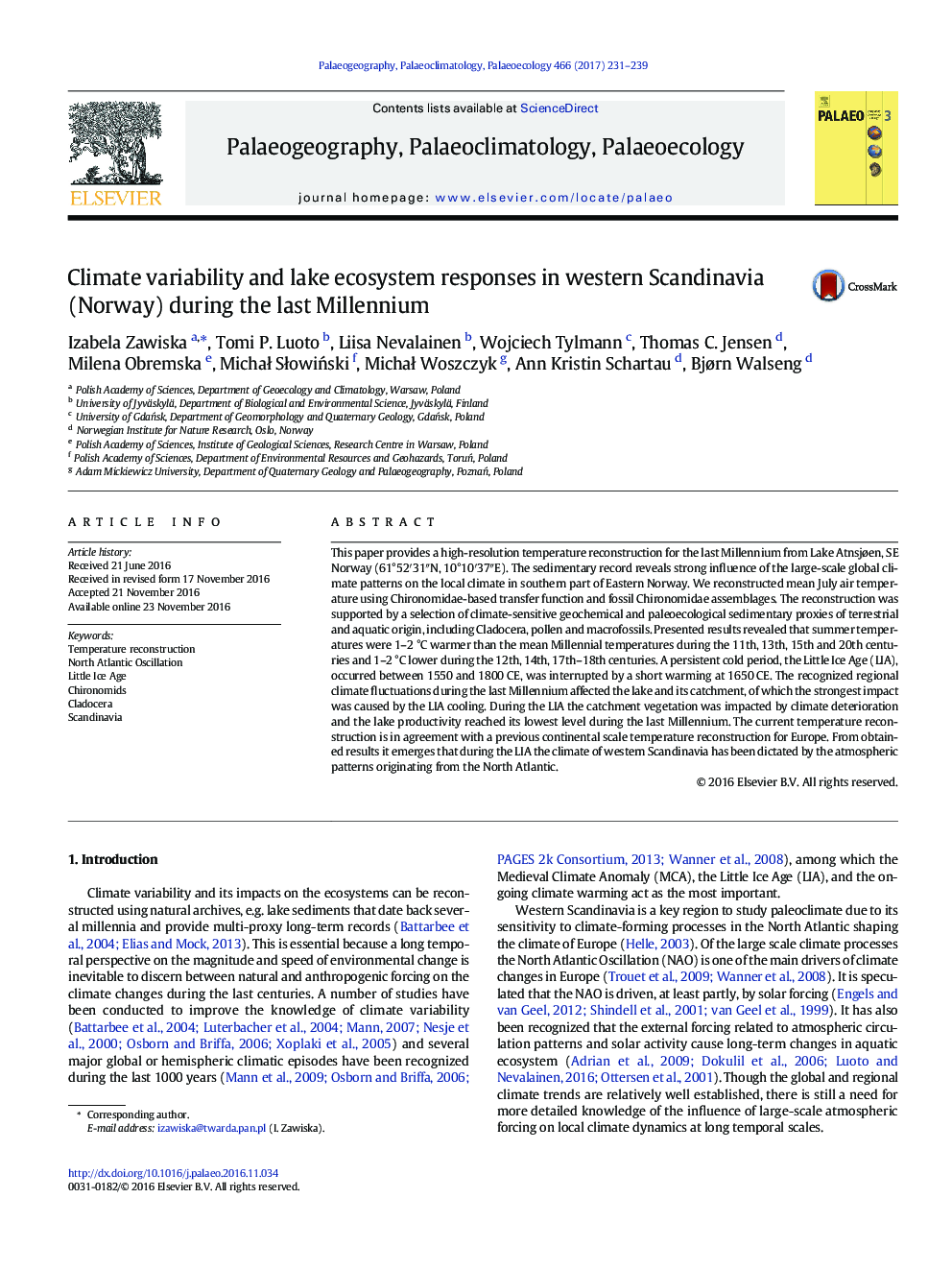| Article ID | Journal | Published Year | Pages | File Type |
|---|---|---|---|---|
| 5756033 | Palaeogeography, Palaeoclimatology, Palaeoecology | 2017 | 9 Pages |
Abstract
This paper provides a high-resolution temperature reconstruction for the last Millennium from Lake Atnsjøen, SE Norway (61°52â²31â³N, 10°10â²37â³E). The sedimentary record reveals strong influence of the large-scale global climate patterns on the local climate in southern part of Eastern Norway. We reconstructed mean July air temperature using Chironomidae-based transfer function and fossil Chironomidae assemblages. The reconstruction was supported by a selection of climate-sensitive geochemical and paleoecological sedimentary proxies of terrestrial and aquatic origin, including Cladocera, pollen and macrofossils. Presented results revealed that summer temperatures were 1-2 °C warmer than the mean Millennial temperatures during the 11th, 13th, 15th and 20th centuries and 1-2 °C lower during the 12th, 14th, 17th-18th centuries. A persistent cold period, the Little Ice Age (LIA), occurred between 1550 and 1800 CE, was interrupted by a short warming at 1650 CE. The recognized regional climate fluctuations during the last Millennium affected the lake and its catchment, of which the strongest impact was caused by the LIA cooling. During the LIA the catchment vegetation was impacted by climate deterioration and the lake productivity reached its lowest level during the last Millennium. The current temperature reconstruction is in agreement with a previous continental scale temperature reconstruction for Europe. From obtained results it emerges that during the LIA the climate of western Scandinavia has been dictated by the atmospheric patterns originating from the North Atlantic.
Keywords
Related Topics
Physical Sciences and Engineering
Earth and Planetary Sciences
Earth-Surface Processes
Authors
Izabela Zawiska, Tomi P. Luoto, Liisa Nevalainen, Wojciech Tylmann, Thomas C. Jensen, Milena Obremska, MichaÅ SÅowiÅski, MichaÅ Woszczyk, Ann Kristin Schartau, Bjørn Walseng,
